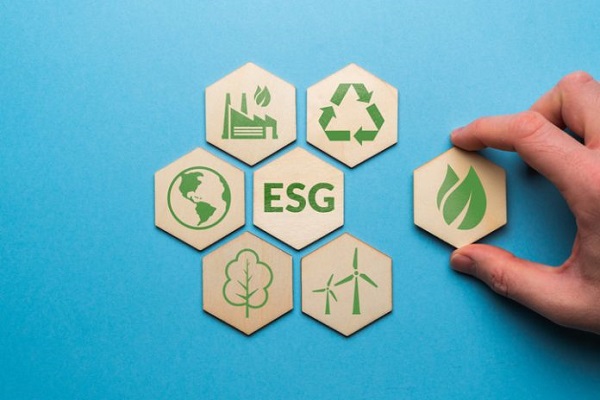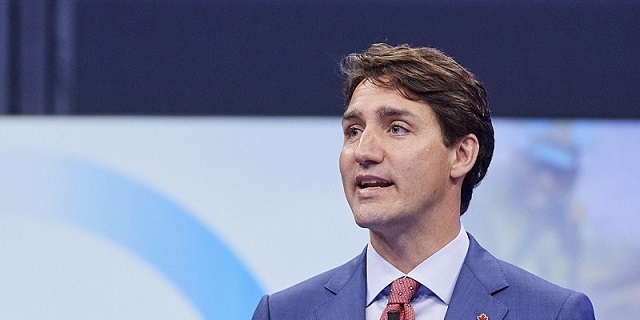Business
A tiny spark of hope in another soul-crushing round of CRTC hearings: Peter Menzies

From the MacDonald Laurier Institute
By Peter Menzies
It was as if the internet — the most democratizing, weird, wonderful, frightening and important technological development in communications since the printing press — had never been invented.
Earlier this month, halfway through answering a question from the House of Commons Industry committee, Annette Verschusen abruptly removed her headphones, stood up, unplugged, and walked out.
It was shocking.
And yet, in a rascally sort of way, I admired it. Yes, yes, the former head of Home Depot Canada and the chancellor of Cape Breton University recently had to resign as chair of Sustainable Development Technology Canada and is under investigation by the Ethics Commissioner for approving hundreds of thousands of dollars in Green Fund grants to her own company, NRStor Inc. But still, who among us hasn’t fantasized about acting out in similar fashion when the blinding light of revelation strikes and it suddenly dawns on you: “WTF am I even doing here? I don’t need this shit.”
And, in your fantasy, you just get up and leave. Like Verschusen did.
I confess I once harboured a similar impulse towards the end of an arduous Canadian Radio-television and Telecommunications Commission (CRTC) hearing along the lines of the three-week-long epic that concluded Dec. 8.
Part of my despair was likely due to being tired. Everyone who appears before a CRTC panel (I was a Commissioner for a decade) deserves one’s full attention and there are thousands of pages of required reading in the weeks leading up to and in the evenings during a hearing.
Then there’s the hearing room. Seemingly designed by Dante Alighieri to sap the will to live from those condemned to work within it, the room’s about the size of an elementary school gym. There are no windows or art and the ambiance complements the soulless mid-century Soviet architectural style of Gatineau’s public buildings.
But — and I hesitate to confess this — it was the relentless rent-seeking that made my mind wander during breaks and impishly imagine what would happen if I just unplugged my laptop, got up, walked out through the crowds, got a cab straight to the airport and never came back. Because eventually, most CRTC hearings devolve into two broad categories. One is a series of presentations from large, protected and profitable companies explaining the dire consequences if they don’t get their way. The other is a seemingly endless parade of well-meaning groups begging for the large companies’ money lest their roles as cultural saviours are diminished. It’s predictably tiresome, tedious and exhausting. But the stakeholders know that commissioners come and go on a regular basis, so no cause to worry about them getting wise to the game.
I was reminded of that inappropriate thought while monitoring the final week of this most recent hearing. When I wasn’t watching, I was reading transcripts and experiencing it all in a mildly PTSDish sort of way.
This hearing was the first of three scheduled to implement the Online Streaming Act (Bill C-11) which amended the Broadcasting Act for the first time since 1991 in order to “modernize” it by — absurdly, in my view — defining the internet as broadcasting and putting it lock, stock and barrel under the authority of the CRTC, which was first formed in 1968 to make sure Anne Murray and Terry Jacks got fair play on the radio airwaves.
This first phase — in which offshore streamers such as Netflix and Disney+ made their regulatory debut — was supposed to be about three things:
- Defining the cutoff line — $10 million, $25 million or $50 million in annual revenue — the CRTC would use to study which companies must buck up and fund Canadian content;
- Deciding how much those companies would have to pay;
- Determining how many different funds should get the loot and how many groups would be involved — BIPOC, Indigenous, LGBTQ2S, etc.
It wasn’t the debilitating boredom of it all that was the most difficult to overcome. Nor was it the acronym-laden banter between the panel and stakeholders that rendered the discourse incomprehensible to ordinary Canadians. And while the manner in which consumers’ interests were disregarded was beyond frustrating, that wasn’t the worst part.
The seriously soul-crushing aspect was that this hearing looked, sounded and felt exactly like CRTC broadcasting hearings have looked, sounded and felt for 30 years.
It was as if the internet — the most democratizing, weird, wonderful, frightening and important technological development in communications since the printing press — had never been invented.
It was a funereal procession of grim-faced presenters from large, often outrageously profitable domestic companies involved in providing telephone, mobile, internet, cable and broadcasting crying woe are we, declaring the industry to be in “crisis,” demanding “urgent” relief from their regulatory burdens and threatening the jobs of thousands of workers should they not get their way. They even got the ball rolling on a whole new fund for local news production lest democracy die. Because, without them, of course it will.
This was followed by a chorus line of vested interests explaining how important it is for the regulator to ensure lotsa cash flows in their direction lest the nation’s creative aesthetic dies under the jackboot of American cultural imperialism. And — OMG! — whatever happens don’t make me have to move to Hollywood. You know, like poor old Ryan Reynolds did.
There were, to be fair, bright parts when the companies and workers that have built success on the internet politely explained, with respect, that what the CRTC was talking about makes no sense in 2023. None whatsoever. Some even begged the panel of Commissioners to please “do no harm.”
Welcome as something — anything — “modern” was during what otherwise was a bad acid flashback to decades past, it was not enough to revive any sense of optimism. At least not until YouTuber J.J. McCullough — the penultimate presenter — showed up.
In words everyone can understand, he said that we are in “a time when there’s a huge thriving sort of forward‑looking modern youthful wing of the Canadian cultural economy and cultural space in the form of online content creators who are often very entrepreneurial, very self‑directed people that have started from very little and have become very successful.”
And that there is concern with “the idea that those people are perhaps in some way like a problem that now needs to be solved in order to sort of subsidize people that, you know, god bless them, are sort of clinging to perhaps a dream of success in a medium that there just isn’t market or public demand for any more.”
It offered a small flicker of hope that, somehow, the 21st century and all its possibilities might yet survive the CRTC’s smothering embrace.
Then again, as the saying goes, it’s the hope that kills you.
Peter Menzies is a senior fellow with the Macdonald-Laurier Institute, past vice-chair of the CRTC and a former newspaper publisher.
Business
Ottawa should end war on plastics for sake of the environment

From the Fraser Institute
Here’s the shocker: Meng shows that for 15 out of the 16 uses, plastic products incur fewer GHG emissions than their alternatives…
For example, when you swap plastic grocery bags for paper, you get 80 per cent higher GHG emissions. Substituting plastic furniture for wood—50 per cent higher GHG emissions. Substitute plastic-based carpeting with wool—80 per cent higher GHG emissions.
It’s been known for years that efforts to ban plastic products—and encourage people to use alternatives such as paper, metal or glass—can backfire. By banning plastic waste and plastic products, governments lead consumers to switch to substitutes, but those substitutes, mainly bulkier and heavier paper-based products, mean more waste to manage.
Now a new study by Fanran Meng of the University of Sheffield drives the point home—plastic substitutes are not inherently better for the environment. Meng uses comprehensive life-cycle analysis to understand how plastic substitutes increase or decrease greenhouse gas (GHG) emissions by assessing the GHG emissions of 16 uses of plastics in five major plastic-using sectors: packaging, building and construction, automotive, textiles and consumer durables. These plastics, according to Meng, account for about 90 per cent of global plastic volume.
Here’s the shocker: Meng shows that for 15 out of the 16 uses, plastic products incur fewer GHG emissions than their alternatives. Read that again. When considering 90 per cent of global plastic use, alternatives to plastic lead to greater GHG emissions than the plastic products they displace. For example, when you swap plastic grocery bags for paper, you get 80 per cent higher GHG emissions. Substituting plastic furniture for wood—50 per cent higher GHG emissions. Substitute plastic-based carpeting with wool—80 per cent higher GHG emissions.
A few substitutions were GHG neutral, such as swapping plastic drinking cups and milk containers with paper alternatives. But overall, in the 13 uses where a plastic product has lower emissions than its non-plastic alternatives, the GHG emission impact is between 10 per cent and 90 per cent lower than the next-best alternatives.
Meng concludes that “Across most applications, simply switching from plastics to currently available non-plastic alternatives is not a viable solution for reducing GHG emissions. Therefore, care should be taken when formulating policies or interventions to reduce plastic demand that they result in the removal of the plastics from use rather than a switch to an alternative material” adding that “applying material substitution strategies to plastics never really makes sense.” Instead, Meng suggests that policies encouraging re-use of plastic products would more effectively reduce GHG emissions associated with plastics, which, globally, are responsible for 4.5 per cent of global emissions.
The Meng study should drive the last nail into the coffin of the war on plastics. This study shows that encouraging substitutes for plastic—a key element of the Trudeau government’s climate plan—will lead to higher GHG emissions than sticking with plastics, making it more difficult to achieve the government’s goal of making Canada a “net-zero” emitter of GHG by 2050.
Clearly, the Trudeau government should end its misguided campaign against plastic products, “single use” or otherwise. According to the evidence, plastic bans and substitution policies not only deprive Canadians of products they value (and in many cases, products that protect human health), they are bad for the environment and bad for the climate. The government should encourage Canadians to reuse their plastic products rather than replace them.
Author:
Business
ESG Puppeteers

From Heartland Daily News
By Paul Mueller
The Environmental, Social, and Governance (ESG) framework allows a small group of corporate executives, financiers, government officials, and other elites, the ESG “puppeteers,” to force everyone to serve their interests. The policies they want to impose on society — renewable energy mandates, DEI programs, restricting emissions, or costly regulatory and compliance disclosures — increase everyone’s cost of living. But the puppeteers do not worry about that since they stand to gain financially from the “climate transition.”
Consider Mark Carney. After a successful career on Wall Street, he was a governor at two different central banks. Now he serves as the UN Special Envoy on Climate Action and Finance for the United Nations, which means it is his job to persuade, cajole, or bully large financial institutions to sign onto the net-zero agenda.
But Carney also has a position at one of the biggest investment firms pushing the energy transition agenda: Brookfield Asset Management. He has little reason to be concerned about the unintended consequences of his climate agenda, such as higher energy and food prices. Nor will he feel the burden his agenda imposes on hundreds of millions of people around the world.
And he is certainly not the only one. Al Gore, John Kerry, Klaus Schwab, Larry Fink, and thousands of other leaders on ESG and climate activism will weather higher prices just fine. There would be little to object to if these folks merely invested their own resources, and the resources of voluntary investors, in their climate agenda projects. But instead, they use other people’s resources, usually without their knowledge or consent, to advance their personal goals.
Even worse, they regularly use government coercion to push their agenda, which — incidentally? — redounds to their economic benefit. Brookfield Asset Management, where Mark Carney runs his own $5 billion climate fund, invests in renewable energy and climate transition projects, the demand for which is largely driven by government mandates.
For example, the National Conference of State Legislatures has long advocated “Renewable Portfolio Standards” that require state utilities to generate a certain percentage of electricity from renewable sources. The Clean Energy States Alliance tracks which states have committed to moving to 100 percent renewable energy, currently 23 states, the District of Columbia, and Puerto Rico. And then there are thousands of “State Incentives for Renewables and Efficiency.”
Behemoth hedge fund and asset manager BlackRock announced that it is acquiring a large infrastructure company, as a chance to participate in climate transition and benefit its clients financially. BlackRock leadership expects government-fueled demand for their projects, and billions of taxpayer dollars to fund the infrastructure necessary for the “climate transition.”
CEO Larry Fink has admitted, “We believe the expansion of both physical and digital infrastructure will continue to accelerate, as governments prioritize self-sufficiency and security through increased domestic industrial capacity, energy independence, and onshoring or near-shoring of critical sectors. Policymakers are only just beginning to implement once-in-a-generation financial incentives for new infrastructure technologies and projects.” [Emphasis added.]
Carney, Fink, and other climate financiers are not capitalists. They are corporatists who think the government should direct private industry. They want to work with government officials to benefit themselves and hamstring their competition. Capitalists engage in private voluntary association and exchange. They compete with other capitalists in the marketplace for consumer dollars. Success or failure falls squarely on their shoulders and the shoulders of their investors. They are subject to the desires of consumers and are rewarded for making their customers’ lives better.
Corporatists, on the other hand, are like puppeteers. Their donations influence government officials, and, in return, their funding comes out of coerced tax dollars, not voluntary exchange. Their success arises not from improving customers’ lives, but from manipulating the system. They put on a show of creating value rather than really creating value for people. In corporatism, the “public” goals of corporations matter more than the wellbeing of citizens.
But the corporatist ESG advocates are facing serious backlash too. The Texas Permanent School Fund withdrew $8.5 billion from Blackrock last week. They join almost a dozen state pensions that have withdrawn money from Blackrock management over the past few years. And last week Alabama passed legislation defunding public DEI programs. They follow in the footsteps of Florida, Texas, North Carolina, Utah, Tennessee, and others.
State attorneys general have been applying significant pressure on companies that signed on to the “net zero” pledges championed by Carney, Fink, and other ESG advocates. JPMorgan and State Street both withdrew from Climate Action 100+ in February. Major insurance companies started withdrawing from the Net-Zero Insurance Alliance in 2023.
Still, most Americans either don’t know much about ESG and its potential negative consequences on their lives or, worse, actually favour letting ESG distort the market. This must change. It’s time the ESG puppeteers found out that the “puppets” have ideas, goals, and plans of their own. Investors, taxpayers, and voters should not be manipulated and used to climate activists’ ends.
They must keep pulling back on the strings or, better yet, cut them altogether.
Paul Mueller is a Senior Research Fellow at the American Institute for Economic Research. He received his PhD in economics from George Mason University. Previously, Dr. Mueller taught at The King’s College in New York City.
Originally posted at the American Institute for Economic Research, reposted with permission.
-

 Brownstone Institute15 hours ago
Brownstone Institute15 hours agoMedical Elites’ Disgrace Over Ivermectin
-

 National13 hours ago
National13 hours agoDespite claims of 215 ‘unmarked graves,’ no bodies have been found at Canadian residential school
-

 Brownstone Institute8 hours ago
Brownstone Institute8 hours agoThe WHO’s Proposed Pandemic Agreements Worsen Public Health
-

 John Stossel2 hours ago
John Stossel2 hours agoProtecting Free Speech: The Early Warning Signs From Around The World
-

 COVID-195 hours ago
COVID-195 hours agoTrudeau’s public health agency recommends another experimental COVID booster
-

 Health6 hours ago
Health6 hours agoTHE WPATH TAPES: Behind-The-Scenes Recordings Reveal What Top Gender Doctors Really Think About Sex Change Procedures
-

 COVID-199 hours ago
COVID-199 hours agoThe New York Times Admits Injuries from COVID-19 Shots
-

 Automotive20 hours ago
Automotive20 hours agoElectric vehicle mandates mean misery all around




